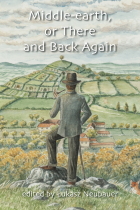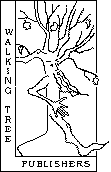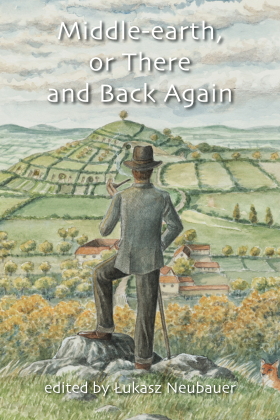Middle-earth or There and Back Again
Łukasz Neubauer (editor)
Cormarë Series No. 44

<--previous | all publications | next-->
how to buy this item
 The world of Tolkien's imagination is a virtually boundless
universe, one in which multiple layers of cultural heritage
revolve around his enduring passion for storytelling,
fascination with languages and devotion to the Catholic faith.
In effect, much of his fiction is an eclectic, though, at the
same time, remarkably coherent, mixture in which certain
elements of the old lore appear to be constantly reinvented,
reimagined and reinterpreted to suit the tastes of the
Professor's readers and listeners. It is a constant mediation
between the world of the past (ancient, medieval or other)
and the world in which he lived, an informed dialogue tinted
by the writer's personal convictions and beliefs.
The world of Tolkien's imagination is a virtually boundless
universe, one in which multiple layers of cultural heritage
revolve around his enduring passion for storytelling,
fascination with languages and devotion to the Catholic faith.
In effect, much of his fiction is an eclectic, though, at the
same time, remarkably coherent, mixture in which certain
elements of the old lore appear to be constantly reinvented,
reimagined and reinterpreted to suit the tastes of the
Professor's readers and listeners. It is a constant mediation
between the world of the past (ancient, medieval or other)
and the world in which he lived, an informed dialogue tinted
by the writer's personal convictions and beliefs.
Ever since the dawn of Tolkien scholarship, the majority of serious academic
discussions concerning his works and ideas have brought into play this very
dialogue, an oft-repeated journey, back and forth (much like Bilbo's own
quest in The Hobbit), between Tolkien's Middle-earth and the other realms
of human imagina-tion, chiefly, though not exclusively, located in the northwestern
fringes of the European continent. It is precisely this kind of
journey (or, rather, journeys), perilous and full of pitfalls, that the reader
will undertake in the present book, guided by a group of six authors from
Poland, scholars whose academic interests (apart from Tolkien) are wide and
varied, ranging from the Greek Antiquity to the age of Queen Victoria.
And so, to Middle-earth or, rather, there and back again! Let us delve into
those multiple layers of Tolkien's fiction in search for some of the foremost
sources of his literary inspiration. In this way, we might be able to observe
Tolkien's worldbuilding processes at work and, by going there and back again,
catch a glimpse of what, in his essay "On Fairy-stories", the writer himself
referred to as "forming mental images of things not actually present".
table of contents | abstracts | cover | announcements | more

Łukasz Neubauer
Foreword
Michał Leśniewski
Tolkien and the Myth of Atlantis, or the Usefulness of
Dreams and the Methodology of Mythmaking
(abstract)
Łukasz Neubauer
'You cannot pass': Tolkien's Christian Reinterpretation of the Traditional
Germanic Ideals of Heroism and Loyalty in The Lord of the Rings
(abstract)
Barbara Kowalik
Tolkien's Use of the Motif of Goldsmith-craft
and the Middle English Pearl: Ring or Hand?
(abstract)
Bartłomiej Błaszkiewicz
J.R.R. Tolkien's The Fall of Arthur in the
Context of the Medieval Tradition of Romance
(abstract)
Andrzej Szyjewski
The Mythical Model of the World in The Story of Kullervo
(abstract)
Andrzej Wicher
The Wisdom of Galadriel: A Study in the Theology of
J.R.R. Tolkien's The Lord of the Rings
(abstract)
Index
table of contents | abstracts | cover | announcements | more

Abstracts
Tolkien and the Myth of Atlantis, or the Usefulness of Dreams and the Methodology of Mythmaking
The Platonic myth of Atlantis appears to play a highly significant role in the development of Tolkien's legendarium. In fact, it was not only a major source of inspiration for the creator of Middle-earth, but also provided a good model for his mythmaking efforts. Finally, it cannot be ruled out that his own story of the tragic downfall of Númenor contains certain autobiographical elements, particularly that both Tolkien and his second son Michael are known to have had a recurrent dream in which a "stupendous and ineluctable wave" could be seen “advancing from the Sea or over the land”.
The dramatic confrontation which ensues on the bridge of Khazad-dûm between Gandalf and the just-awakened Balrog not only constitutes one of the turning points in the War of the Ring, but it also provides a glimpse of what Tolkien may have envisioned as a Christian reinterpretation of the traditional model of Germanic heroism. The two notions are, of course, at a clearly detectable ethical variance, the former being fundamentally defined by the self-sacrificial dedication to the cause, the latter by the self-centred pursuit of transient glory. Seen in the light of medieval literature, the bridge episode might also be read as a conceptual reimagining of the roughly analogous situation in the Old English poem The Battle of Maldon, where the far-too-confident ealdorman Byrhtnoth allows the enemy safe passage across the ford, thus placing himself and his people at a considerable strategic disadvantage. In The Lord of the Rings, the role of Byrhtnoth is obviously assigned (albeit inversely) to the character of Gandalf whose courageous efforts to protect his companions accentuate the wizard's sense of responsibility, upwards (the cause) as well as downwards (his companions).
Tolkien's Use of the Motif of Goldsmith-craft and the Middle English Pearl: Ring or Hand?
This paper explores the symbolism of jewels, particularly the One Ring, in J.R.R. Tolkien's fiction in the light of observable parallels with the anonymous Middle English dream-vision poem, Pearl. The theme of the perils of craft is traced in The Silmarillion and The Lord of the Rings, in which the excessive preoccupation with works of smithcraft is shown to corrupt individuals, preventing them from enjoyment and appreciation of works of creation and leading to the degeneration of whole communities. It is argued that Tolkien may be indebted for his treatment of jewels to the Pearl poet. More broadly, the influence of Pearl on Tolkien, the extent and depth of which only begins to be understood in criticism, is demonstrated in the field of style, vocabulary, imagery, and ideas.
J.R.R. Tolkien's The Fall of Arthur in the Context of the Medieval Tradition of Romance
The paper discusses the recently published alliterative poem The Fall of Arthur by J.R.R. Tolkien. The argument seeks to present the poem in the context of the Middle English tradition of romance literature, where the literary legacy centred around the person of a mythical king became one of the thematic cornerstones of the genre. Within this, an important aspect is Tolkien's indebtedness to the alliterative tradition and its specific poetics and prosody. Here the focus is on the reciprocal tension between composition methods which originated in a partly oral environment and the standard methods of creation current in literary culture. Another important aspect of the poem is the evolution of the main characters of the traditional story, especially the two crucial figures of Mordred and Guinevere, who are assigned a more active role in Tolkien's narrative than was customary in the medieval Arthurian tradition. A parallel aim of the argument is to conduct a close reading analysis of the consecutive segments of poem in order to produce a coherent vision of the text in its existing, unfinished form, as well as to attempt to speculate on the overall plan J.R.R. Tolkien might have had in mind for the poem at various stages of his work on the text.
The Mythical Model of the World in The Story of Kullervo
The Story of Kullervo constitutes a valuable source of information for those scholars whose focus is on the study of the formation of Tolkien's mythopoeic works. The following text is an attempt to examine the subtextual model of his universe, a model which, despite its distinctively individual features, appears to have been at least partly based on the world depicted in the Kalevala. The discrepancies between the Finnish epic and The Story of Kullervo may be seen particularly in the protagonist's life, his psychological portrait and the relationship with the divine beings and other spirits, i.e. where Tolkien tries to eliminate or at least smooth out the inconsistencies which could be found in the songs that were collected and edited in the first half of the nineteenth century by Elias Lönnrot. What is more, it looks as if, by modifying the pantheon of the Finnish gods and introducing his own nomenclature, Tolkien was gradually approaching his later vision of the Valar and their relationship with Ilúvatar.
The Wisdom of Galadriel:
A Study in the Theology
of J.R.R. Tolkien's The Lord of the Rings
The present paper has been written with the aim of revealing the nature of Tolkien's conception of wisdom as represented by one of the most important characters of The Lord of the Rings, the powerful sorceress Galadriel, and also by the character she is closely connected with, the wizard Gandalf. The author believes that the main inspiration for this conception of wisdom comes from the mainstream Christian tradition, and particularly from Saint Paul's Epistles. This is not meant to imply that the existence of other sources of inspiration should be ruled out. The article takes also into account the importance of Galadriel's femininity as a counterpoint to the predominantly masculine world depicted in The Lord of the Rings. In this respect, the author indicates the possibility of biblical influence, though not necessarily connected, as is often assumed, with the cult of the Blessed Virgin Mary, and also suggests that the Victorian vision of womanhood, as represented by John Ruskin's writings, can be associated with the character drawing of Lady Galadriel.
table of contents | abstracts | cover | announcements | more

Cover
Cover illustration by Anke Eissmann
table of contents | abstracts | cover | announcements | more

Announcements
Eight book reviews (4th July 2023)
Many book reviews (12th April 2023)
Book reviews in Mallorn (6th February 2023)
Review published in Fafnir (29th July 2022)
Three book reviews in Mythlore (16th April 2022)
Review of Middle-earth or There and Back Again (23rd March 2021)
Beyond Bree reviews Middle-earth or There and Back Again (20th January 2021)
New publication, Middle-earth or There and Back Again (19th July 2020)
Forthcoming and planned publications (21st July 2017)

130 pages, Walking Tree Publishers 2020, Cormarë Series No. 44, Editor: Łukasz Neubauer
, ISBN: 978-3-905703-44-3.

<--previous | all publications | next-->
how to buy this item

More on Middle-earth or There and Back Again

terms and conditions
visitors since 10.07.20
last updated 10.07.20

